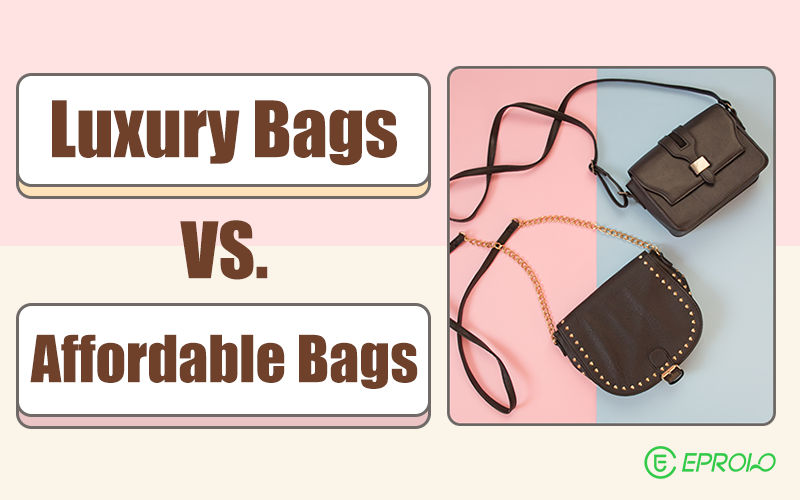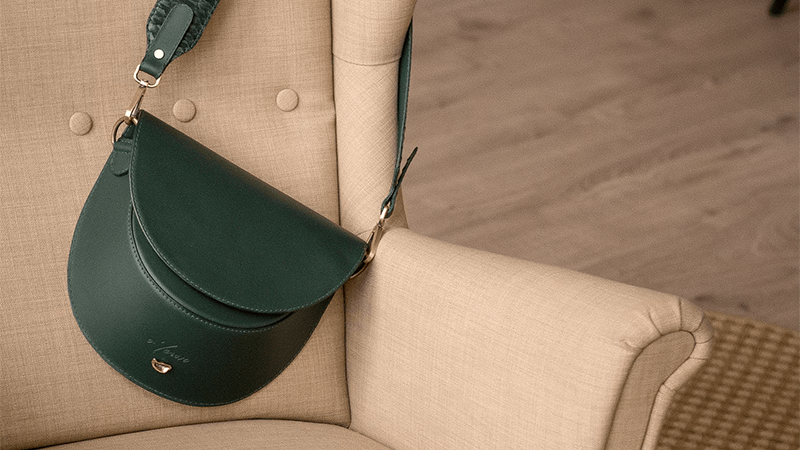
7 Key Differences Between Luxury and Affordable Bags
| Feature | Luxury Bags | Affordable Bags |
|---|---|---|
| Price Range | $150–$1,000+ | $10–$100 |
| Target Buyer | Brand-conscious, trend-aware, high expectations | Practical, budget-minded, fast decision-making |
| Order Frequency | Low volume, high margin | High volume, low margin |
| Marketing Style | Brand storytelling, curated imagery | Viral content, value-driven ads |
| Customer Expectations | High (packaging, delivery, presentation) | Moderate (focus on usefulness and style) |
| Return Risk | Higher (expectations are specific) | Lower (price softens disappointment) |
| Startup Complexity | Needs strong branding and supplier quality | Easier to test and iterate quickly |
What Sells Better for Most Dropshippers?
So here’s the direct answer: affordable bags tend to perform better across most dropshipping models—and here’s why:
Ideal for New or Mid-Level Dropshippers
Affordable bags allow you to start with lower financial risk. You can test multiple styles without committing to large upfront costs. Even if one item doesn’t sell, the loss is manageable—making it perfect for beginners who are still learning the market.
Support Fast-Paced Product Testing
Because they’re inexpensive, affordable bags can be listed, tested, and rotated quickly. You can try new styles every week, run A/B ads, and pivot fast without eating into your budget. This rapid testing cycle is essential for finding winners early.
Appeal to Young Audiences (18–34)
Younger buyers on platforms like TikTok, Instagram, and mobile marketplaces are more price-sensitive. They’re more likely to make impulse purchases under $50—especially if the bag is trendy, multi-functional, or has a viral look.
Trending Bag Styles Sell Fast
Examples like foldable travel totes, crossbody anti-theft bags, or transparent stadium bags solve real problems while fitting into popular lifestyle categories (travel, fitness, sports, events). These bags attract buyers who want practicality and trend at an accessible price.
Why Affordable Bags Can Work
- Lower the barrier to entry for buyers (no hesitation at $20–$40 price points)
- Perform well with ad-driven sales, especially through TikTok or Facebook
- Don’t require heavy branding to convert—basic lifestyle photos and a clear benefit are enough
- Can be bundled or upsold easily, increasing average order value without increasing buyer resistance
That’s why affordable bags win for most dropshippers: they combine low startup cost, fast testing, broad appeal, and reliable buyer behavior.

The Hidden Risks of Dropshipping Luxury Bags
On the other hand, for luxury items, these risks are often overlooked in dropshipping, but they can cause you everything if not managed properly.
1. High Upfront Costs and Stock Pressure
Luxury-style bags often come with a higher unit cost—sometimes $80 to $200 per piece, even from a supplier. If the product doesn’t sell well, you’re left sitting on expensive unsold inventory or sunk costs tied up in sample orders, content creation, or returns.
Risk: Failed testing drains budget faster
Tip: Start with sample orders only—don’t bulk buy unless proven
2. Supplier Legitimacy and Counterfeit Risk
If the supplier isn’t well-vetted, you could end up unknowingly dropshipping counterfeit or poorly made replicas. Selling fake luxury items—even unintentionally—can lead to serious legal consequences, especially under trademark law in the U.S., EU, or UK.
Risk: Trademark violations, chargebacks, even legal threats
Tip: Use verified suppliers only. Avoid listings that mimic branded logos, names, or registered designs.
3. Shipping Loss and Theft
Luxury bags are more likely to be flagged during customs checks or even stolen in transit, especially with international shipping routes. Since dropshippers have less control over logistics, you carry the customer service burden if something goes missing.
Risk: Higher loss claims, refund disputes, customer dissatisfaction
Tip: Use shipping insurance and tracking for any order over $100
4. Strict Buyer Expectations
Luxury buyers often expect fast shipping, beautiful packaging, and perfect condition upon arrival. Dropshipping models—especially international ones—struggle to meet these expectations consistently.
Risk: Refunds, negative reviews, poor word-of-mouth
Tip: Consider branding services and inspect samples carefully before scaling
5. Return and Refund Complexity
High-ticket returns are trickier. Customers are more likely to dispute charges or demand free return shipping, especially if the product looks or feels below expectations. Without a solid returns system, you absorb the cost.
Risk: Shrinking profit margins or even losses per return
Tip: Clearly state return policies and inspect supplier return handling beforehand
When Luxury Bags Can Work
But selling higher-ticket bags can still be viable—but it needs a brand-first approach. This path suits dropshippers who are:
- Building a niche label with consistent identity
- Offering premium styles like designer-inspired totes or minimal leather pieces
- Using high-quality photography and content creation
- Creating a sense of exclusivity or lifestyle appealBuyers in this market expect elevated packaging, trustworthy product pages, and smooth fulfillment.
Matching Product Type to Platform Strategy
If you decide to pursue either affordable or luxury bag models, your next move is to match the right product with the right sales platform.
Visual Content PlatformsTrendy, under-$40 aesthetic bags that stand out in short videos
| Sales Channel | Best-Suited Bag Type |
|---|---|
| Branded Online Store | Affordable bags under $70 that support bundles and fast checkout |
| Boutique or Curated Stores | Mid- to premium-level bags with strong positioning and storytelling |
| Custom Product Platforms | Personalized or seasonal bags with functional appeal |
What Should You Start With?
Once you’ve matched your product to the right platform, the next step is deciding where to start—based on your goals. If your goal is quick testing and stable sales:
- Begin with affordable bags that align with current lifestyle needs—like gym totes, travel-ready bags, or smart daily-use backpacks.
If you’re investing in a long-term brand:
- Explore premium designs that fill a niche—such as office-ready vegan leather totes, compact travel organizers, or minimalist convertible bags.
How to Validate Bag Trends
Also, it’s a good idea to check if the bag style is popular while you’re still looking for items to sell.
- Check recent viral bag styles across short-form video platforms.
- Look at best-selling bags on marketplace platforms and review customer feedback.
- Test 1–2 styles at a time with low-risk paid ads.
- Choose a handbag dropshipping supplier that supports consistent quality, fast shipping, and branding options.
If you’re using a dropshipping platform like EPROLO, you can also explore:
- Bag product categories curated for seasonality or occasion
- Built-in branding services for private label packaging
- Integrated order tracking and inventory sync
Final Verdict
For fast growth, broad appeal, and easier testing:
Affordable bags are the stronger choice for most dropshippers.
They’re easier to sell, fit modern buyer behavior, and require less upfront investment.
Luxury bags can succeed, but only if you’re ready to build a brand and deliver a high-end experience from day one.







